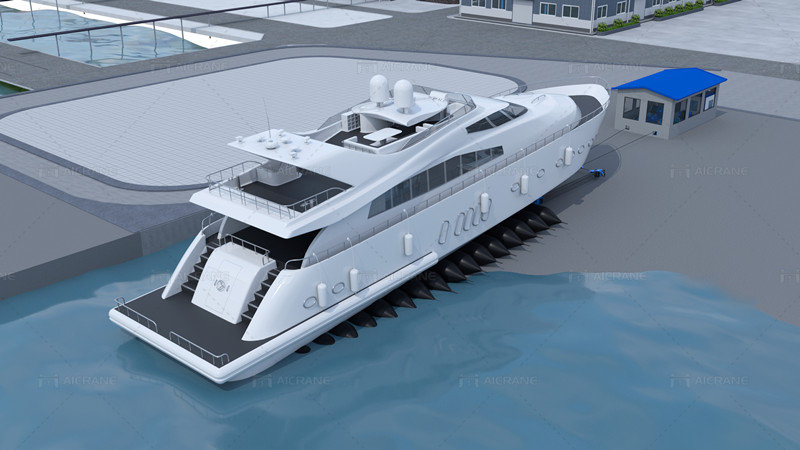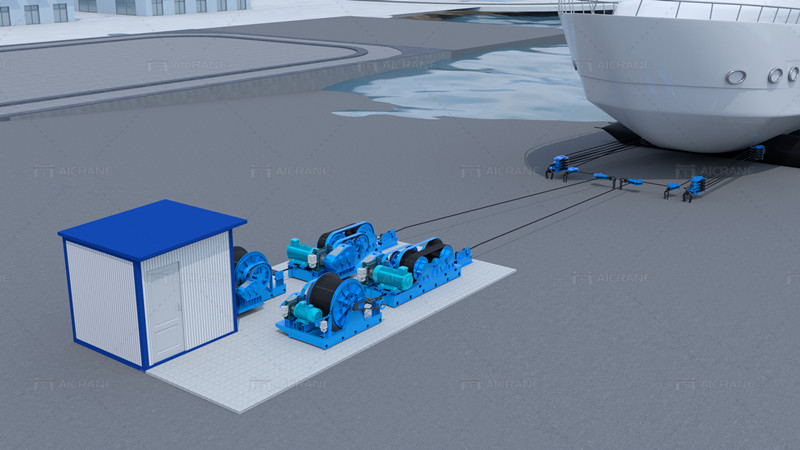Slipway winches play a pivotal role in marine operations, facilitating the launch and retrieval of vessels with precision and efficiency. The calculation of slipway winch parameters is a complex process that requires careful consideration of various factors to ensure safe and effective operations. In this comprehensive guide, we will explore five key aspects of slipway winch calculation, shedding light on the intricacies involved in optimizing these critical systems.

Load Capacity Calculation
The load capacity of a slipway winch is a fundamental parameter that dictates its ability to handle vessels of different sizes and weights. Contact your winch manufacturer to get more information. The calculation of load capacity involves assessing the maximum weight the winch can safely lift and move. The formula for load capacity calculation is:
Load Capacity=Vessel Weight+Additional Load
The vessel weight includes the weight of the vessel to be launched or retrieved, and the additional load accounts for factors such as water resistance, friction, and the weight of any additional equipment on the slipway.
It is crucial to consider safety margins and potential dynamic loads during vessel movements to ensure that the slipway winch can handle unexpected forces without compromising safety.
Line Pull and Drum Capacity
Line pull refers to the force exerted by the slipway winch on the mooring line or cable during vessel launch or retrieval. Calculating line pull involves considering the vessel weight, the slope of the slipway, and additional factors such as water resistance and wind. The formula for line pull calculation is:
Line Pull=Slope Factor/Vessel Weight+Additional Load
The slope factor accounts for the angle of the slipway, which influences the force required to move the vessel. It is essential to select a slipway winch with a line pull capacity that exceeds the calculated value to accommodate variations in operating conditions.
Drum capacity is another critical consideration, determining the length of cable or wire rope the winch can accommodate. It is calculated based on the total length of cable required for the slipway operation, considering the vessel’s size and the desired launch or retrieval distance.
Power Requirement Calculation
The power requirements of a slipway winch are influenced by factors such as line speed, line pull, and the efficiency of the winch system. Calculating the power required ensures that the winch motor or drive system can meet the demands of the operation without overload. The formula for power requirement calculation is:
Power Requirement=Line Pull×Line Speed/Winch Efficiency
Line speed is the rate at which the cable or mooring line is pulled in or out, and winch efficiency accounts for losses in the mechanical and electrical components of the winch system.
It is crucial to choose a winch motor or drive system with sufficient power capacity to handle the calculated power requirement, taking into consideration safety factors and potential variations in operational conditions.

Braking System Design
The braking system of a slipway winch is a critical safety feature that ensures the controlled and secure stopping of the vessel during launch or retrieval. The design of the braking system involves calculating the braking torque required to halt the moving load. The formula for braking torque calculation is:
Braking Torque=Line Pull×Winch Radius/Braking Efficiency
The braking efficiency takes into account the effectiveness of the braking system in converting mechanical energy into heat to stop the winch drum.
It is essential to design the braking system with a safety margin to handle unexpected loads or emergency situations. Regular maintenance and testing of the braking system are crucial to ensure its reliability and effectiveness.
Dynamic Load Analysis
Dynamic loads, such as those resulting from vessel acceleration or deceleration, introduce additional forces that must be considered in slipway winch calculations. Dynamic load analysis involves assessing the impact of these dynamic forces on the winch system. The formula for dynamic load calculation is:
Dynamic Load=Vessel Mass×Acceleration/Efficiency Factor
The efficiency factor accounts for losses in the winch system due to factors such as friction and mechanical resistance. Dynamic load analysis is essential for selecting winch components that can withstand the forces generated during rapid vessel movements.
Incorporating dynamic load analysis into slipway winch calculations ensures that the winch system is robust enough to handle the varying forces experienced during vessel launch and retrieval.
In conclusion, slipway winch calculation is a multifaceted process that involves careful consideration of load capacity, line pull, power requirements, braking system design, and dynamic loads. Precision in these calculations is crucial to ensure the safe and efficient operation of slipway winches in marine applications. Engineers and professionals involved in slipway design and operation must leverage these calculations to select and configure winch systems that meet the specific demands of vessel launch and retrieval, contributing to the overall success and safety of maritime operations.